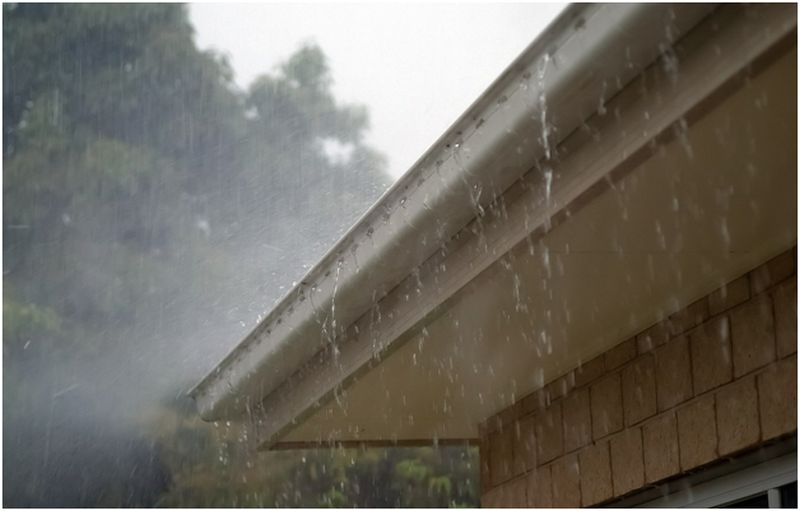Gutters are a simple solution for redirecting the water that falls on the roof when it rains and help protect the house from potential water damage. If maintained properly, they can last a long time without ever needing to be replaced. But, if they stop working as they should, there are many simple repair jobs you can do to fix and prevent these issues from happening again, extending your gutters’ lifespan.
Below we’ll explain some of the most common gutter problems and the solutions to fix them.
1. Clogged gutters
This is one of the most common problems since gutters are designed to catch water running off the roof, but can also catch other debris like leaves, moss, twigs, and anything that can fall into them. All these things can block the pipes if left unattended to build up for a long time. If this occurs, the gutter can drain the rainwater properly any longer which will later cause blockage and overflow.
Solution
Clean them regularly, especially in autumn and spring. Another great solution would be to contact professionals like Local Home Pro who provide a free in-home consultation. They can point you to the right contractors for gutter guards, a solution that will provide enhanced gutter protection not only for keeping debris out but other problems as well.
2. Saggy gutters
The gutters will start to sag when weighed down by debris. Reasons for this could be blockages, build-up of snow, or faulty gutter installation in the first place. If the gutters don’t have an adequate support bracket to hold them, then sagging will be a real problem. That’s why regular maintenance is essential in preventing this.
Solution
Depending on what’s the main cause for your sagging gutters, you can clean the gutter to remove debris that might build up over time. Also, install snow guards as protection from snow and ice sliding off the roof onto the gutters. Remember that snow can be deceptively heavy when there’s a build-up and this can strain the support brackets.
3. Water freezing in gutters
During winter when temperatures drop, any water left in your gutters will turn to ice. It’s simple when water turns to ice it will expand, and when it turns back to the water, it contracts. The process of freezing and thawing can have a terrible damage effect on your gutters, distorting their shape and forcing joints apart, which can lead them to fall.
Solution
Pour warm water into the gutters to melt the ice. Note that this can only speed up the contraction process which can still cause damage. Make sure you clean your gutters before winter arrives, and they’re installed with a fall towards the downpipe which will reduce the chances of water sitting in the gutters. If you insulate the loft, the warmth in the roof will radiate out and keep the gutters from freezing.
4. Leaky gutters

When a storm hits, you may look for missing shingles or broken glass, but don’t forget to check your gutters as well. If neglected, leaky gutters can slowly erode the underlying support and foundation. Remember, you should check for damage directly after a storm to make sure the water is draining as it should.
Solutions
Once you’ve noticed a leaky gutter, fixing it would be easy. If the hole is small, you can apply a bit of plastic cement using a putty knife. If the hole is larger, you can cut a strip of flashing to cover the hole and secure it by applying cement to fix the gutter leak.
5. Incorrect gutter fall
The improper gutter slope is one of the more challenging gutter issues. When the rain stops, some of the water can end up just sitting in the gutter, and worse, during heavy rainfall, the gutters can struggle to drain the water away fast enough to stop it from overflowing. If the gutters constantly overflow, without any sign of a blockage, this could be the cause.
Solution
If you want to add a fall to an existing gutter system you can unscrew and re-install each support bracket to gently angle the gutters down toward the downpipe. Depending on the gutter brackets’ material, you can slightly bend them to angle it towards the downpipe. But remember, consult with a professional if you don’t feel confident in doing the work.
In closing
There are other problems with gutters that may arise during the years, so getting to know the problems and their solutions would be quite beneficial. They can cause damage not only to the roof but your house as well, so make sure you keep them properly maintained and fix problems as soon as you notice any.
Article Submitted By Community Writer




